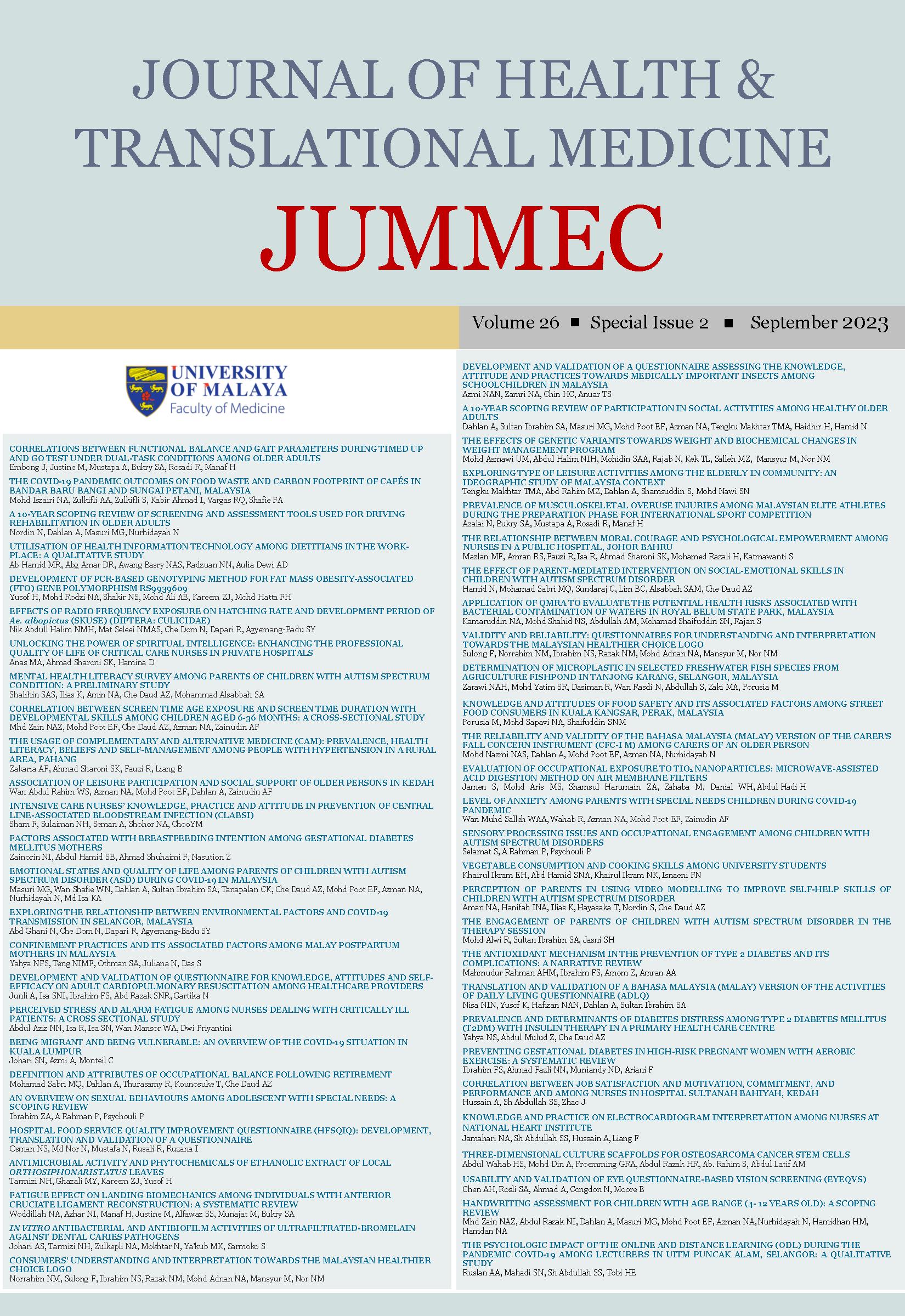HANDWRITING ASSESSMENT FOR CHILDREN WITH AGE RANGE (4- 12 YEARS OLD): A SCOPING REVIEW
Received 2023-07-12; Accepted 2023-09-20; Published 2023-09-20
DOI:
https://doi.org/10.22452/jummec.sp2023no2.53Abstract
This scoping review aims to explore the existing literature on handwriting assessment in children with developmental disabilities compared to typically developing children, using the Handwriting Frame of References (FOR) as a framework. The study follows the PRISMA-Scoping Review guidelines and retrieves evidence published between 2011 and July 2021 from four databases, including EBSCO, ScienceDirect, Scopus, and Web of Science. The selected articles are evaluated using the Crowe Critical Appraisal Tool (CCAT) for quality, and 30 articles are ultimately included in the study, with CCAT scores ranging from 58% to 88%. The study finds that only three out of the fifteen handwriting assessments align with the handwriting FOR. The selected articles are categorized based on the Handwriting FOR’s domain for handwriting performance. The findings reveal that further research is needed to explore the impact of environmental factors on handwriting performance in children. Despite the limitations of this study, such as the restricted search criteria and the use of only one FOR, it provides a comprehensive overview of the existing literature on handwriting assessment in children with developmental disabilities compared to typically developing children. This review highlights the need for standardized handwriting assessments that are in line with the handwriting FOR and suggests that the assessment of environmental factors should be considered when evaluating handwriting performance in children.
Downloads
Downloads
Published
Issue
Section
License
All authors agree that the article, if editorially accepted for publication, shall be licensed under the Creative Commons Attribution License 4.0 to allow others to freely access, copy and use research provided the author is correctly attributed, unless otherwise stated. All articles are available online without charge or other barriers to access. However, anyone wishing to reproduce large quantities of an article (250+) should inform the publisher. Any opinion expressed in the articles are those of the authors and do not reflect that of the University of Malaya, 50603 Kuala Lumpur, Malaysia.


